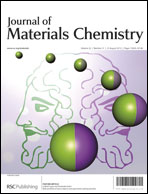A new hybrid scaffold constructed of solid freeform-fabricated PCL struts and collagen struts for bone tissue regeneration: fabrication, mechanical properties, and cellular activity
Abstract
We propose a new technique for the fabrication of hybrid scaffolds using melt-plotting and a low temperature plate. This method is useful for the fabrication of a scaffold composed of heterogeneous biomaterials. We applied the new technique to collagen and polycaprolactone (PCL), which are stacked in interdigitated struts in successive layers to acquire a three-dimensional (3D) shape. The fabricated scaffolds exhibited a two-phase structure consisting of collagen struts to enhance the biological activity and PCL struts to increase the mechanical stability. They also exhibited a pore size under 100% pore interconnectivity appropriate for bone tissue regeneration. The fabricated hybrid scaffolds were assessed not only for mechanical properties, but also for biological capabilities by culturing osteoblast-like cells (MG63) on pure PCL, collagen, and hybrid scaffolds. Compared with the pure PCL scaffold, the hybrid scaffold exhibited higher biological activity, such as cell viability (an increase of about 27% at 7 days), alkaline phosphatase (ALP) activity (an increase of about 36% at 14 days), and calcium deposition. The pure collagen exhibited the highest value for most biological activities studied. In addition, the hybrid scaffolds exhibited a dramatic increase of Young's modulus compared to those of pure collagen scaffolds. These results suggest that this hybrid scaffold is potentially useful as a biomedical scaffold for bone tissue regeneration.


 Please wait while we load your content...
Please wait while we load your content...